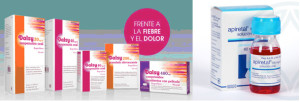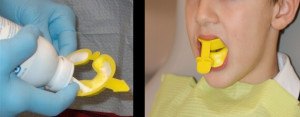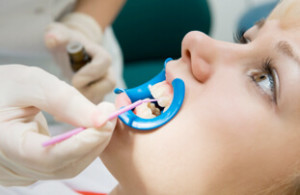The eruption or dental exfoliation of the temporary teeth (dentition that is in the mouth of children from 8 months to 12 years approximately) usually generates some discomfort, especially in the initial eruption, between 8 months and 20 months approximately.
The dental eruption begins with the exit of the lower central incisors (7-8 months of age), followed by the central and upper lateral incisors and ends the frontal face with the eruption of the lower laterals. More or less is the pattern to follow in a normal eruption, however each child carries a particular rhythm.
In some cases, usually few, the eruption process is accompanied by certain symptoms that generate discomfort in our children, it is good to identify them and keep them under control. It is important to know that they do not represent a health problem and that they are part of a physiological process, in many cases they are processes that coincide or favor the eruption, that’s all.
There are some symptoms that will help you know that your baby is about to get the first tooth:
- Your baby drools more than usual
- On many occasions, the exit of the teeth is accompanied by the appearance of acid poops which can cause irritation and stinging
- It is also possible that the eruption of teeth coincides with a viral process or an increase in body temperature
- The baby puts everything in the mouth and bites very hard.
There are some alternatives to alleviate these symptoms:
- Dental analgesics in gel mode that are applied directly to the gums.
- Oral anti-inflammatories to improve symptoms and clinical discomfort.
- Silicone teethers.
- Initiate dental hygiene to prevent the accumulation of bacterial plaque on sore gums due to the eruption process.
FLUORIDE AND ITS BENEFITS
Alarming statistics: 77% of 3 year old children already have at least one caries lesion in their mouth.
Let’s talk a little about fluoride and its benefits, the application of fluoride should start when the dentist recommends it. Fluoride is a natural element that is found in the earth’s crust and has an extensive distribution in nature. Some foods and water tanks contain fluoride. Fluoride is often added to drinking water as a caries-reducing element. In the 1930s, researchers found that people who drink naturally fluoridated water had a lower number of caries (two thirds) than those who lived in areas of non-fluoridated water. Studies have shown repeatedly that if fluoride is added to community water tanks, the number of caries in the population decreases. The ADA (American Dental Association), the World Health Organization and the US Medical Association, among other organizations, have recommended the use of fluoride in water tanks due to its effect against caries.
How does fluoride work?
Fluoride prevents caries in two ways:
- Fluoride concentrates in the developing bones and teeth of children and strengthens the enamel of the teeth of babies and adults before eruption process.
- Fluoride helps harden the enamel of teeth that have already erupted. It works on the processes of demineralization and remineralization that naturally occur in the mouth. After eating acids are produced that cause demineralization: a dilution of calcium and phosphorus that is below the tooth surface. At other times exactly the opposite occurs, saliva helps replenish the calcium and phosphorus that preserve the strength of the teeth. This process is called remineralization. When fluoride is present in remineralization, the minerals deposited are harder and help strengthen your teeth avoiding the dissolution that would occur in the next phase of demineralization.
How can it be applied?
Dental fluoride is found in toothpastes, varying its concentration according to the age and specialization of each paste. It is also present in mouthwashes and gels that are applied in dental offices 1 or twice a year as appropriate in each clinical case (there are variables that affect such as hygiene, caries risk, among others). There are scientific studies that claim that the topical application of fluoride is what greatly reduces the risk of caries formation and that the ingested fluoride is only relevant before the formation and eruption of the tooth. It is important to bear in mind that in the pre-eruptive phase, when the jaws are being formed, if there is an excess of fluorine, a dental afluorosis occurs which triggers in a porous and weak enamel.
There are two topical fluoride application techniques:
- With cuvette: the fluoride gel is applied in a silicone cuvette that the patient bites and will take it for 5-10 min. The excess is removed and indications are given (do not eat or rinse in 30 min.) It is completely painless.
- Without cuvette: fluoride is applied directly with a brush on all sides of the patient’s teeth, waiting for 5-10 min. and the later indications are similar in both techniques.
The recommendation is to visit your dentist of confidence who will be the one who recommends the best treatment. If you have any questions, visit us and we will inform you of everything.







